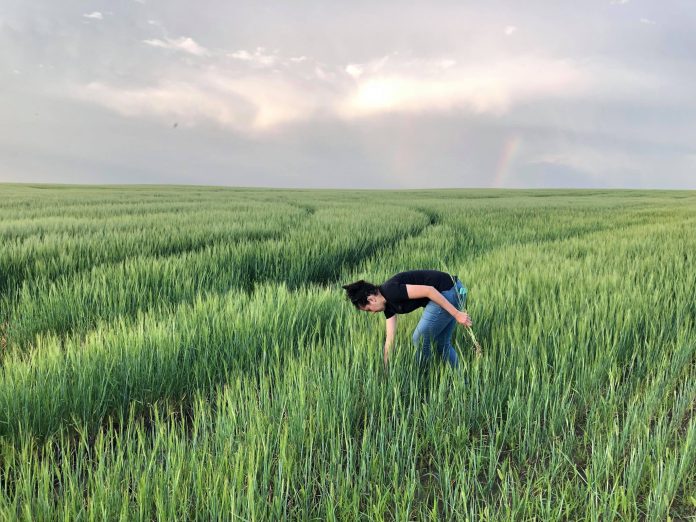
Wheat is an iconic symbol of agriculture in the prairies, but it faces a rapidly growing threat.
Wheat is Canada’s largest field crop, with an average of about 30 million tonnes harvested annually. It’s also exported to about 80 countries, making it an important economic crop – one that we must ensure continues to thrive.
However, a fungal infection called Tan Spot disease emerged about 50 years ago and has become one of the most destructive leaf diseases of wheat worldwide. If unmanaged, the disease could lead to millions of dollars in losses for Canadian farmers.
“The pathogen that causes the disease is a fungus,” said Reem Aboukhaddour of the Lethbridge Research and Development Centre. “It attacks the emerging wheat leaves. It causes damage to the cell, and the symptoms appears like a tanned coloured lession.
“It destroys the ability of the plant to carry out photosynthesis which later reflects on the ability of the plant to yield grains, so Tan directly is related to loss of the yield.”
Aboukhaddour is leading a team of Agri-Food Canada researchers who are partnering with international researchers to understand how the disease has evolved globally, and how scientists and farmers might be able to slow its progression.
Tan Spot did significant damage when it first showed up in North America in the 1970s as researchers sought to understand what caused it. Since then, researchers like Aboukhaddour have learned a lot about the disease. She said they are making progress in reducing it.
“A lot of positives has been recorded,” she said. “There has been tremendous success as a result of collaborations among scientists and researchers. Canadian farmers are encouraged to plant resistant varieties of wheat, crop rotation should also be practised (wheat and potatoes for example). Use of fungicide as the new leaves are emerging. Controlling the irrigation is another option.”
The good news is that Tan Spot does not affect canola, bailey, or oats, and aside from the damage to the grain, there is no documented cases of Tan Spot affecting the human in any negative way.
Aboukhaddour said she was grateful for the funding they received to research the disease.
“This research would not be possible without the Wheat Commission in both Alberta and Saskatchewan, Agriculture and Agri-Food Canada … (and) many of my colleagues,” she said. “It’s a team effort. It’s not only one person.”
—with files from Jason Kerr/Daily Herald

